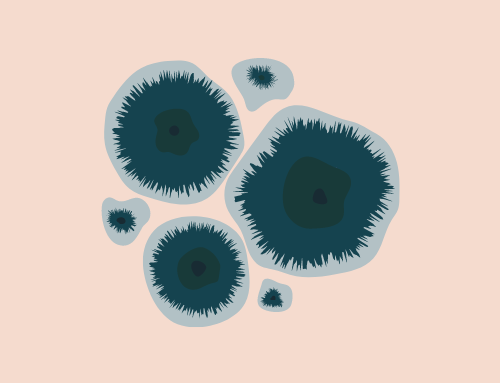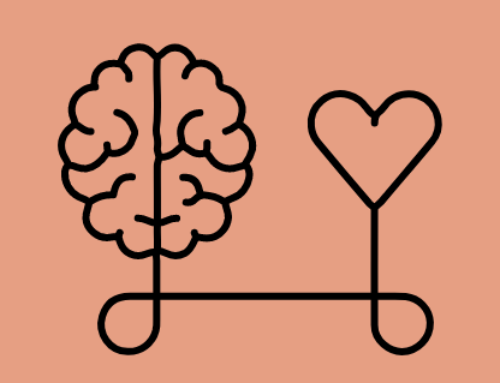Updated 10/8/23; Originally posted 12/2/21
High Cholesterol: Manage Through Your Wellness Lifestyle
High cholesterol is so common that it is easy to believe it can not be avoided or stopped except through medication. As with all the “lifestyle diseases”, most of us can make significant changes to our cholesterol levels and types which improve our health through changes to our daily choices but we need to know which changes will have the largest impact and be worth the effort. Read on for an explanation about what your body wants and needs in order to have healthy cholesterol levels!

Table of Contents
- Why is cholesterol beneficial?
- Cholesterol testing for wellness
- 5 Actions to improve your cholesterol numbers
- References
Cholesterol is Essential to Wellness
Cholesterol is not a bad guy. It is a healthy fat (called a lipid) and is crucial for brain health, hormone production including vitamin D, and cell walls. If your liver is healthy, it makes 80% of the cholesterol you need and 20% comes from your diet. Your liver creates and manages the 5 types of lipoproteins that act as carriers for moving cholesterol around the body:
- Trigyceride rich chylomicrons (made mostly in the digestive system and are diet dependent)
- LDL – Low Density Lipoprotein – think of these as the hockey-puck-like garbage floating around in your blood
- HDL – High Density Lipoprotein – think of these as light fluffy garbage collectors – HDL removes cholesterol buildup on the inside of your blood vessels
- VLDL – Very LDL – carry triglycerides and change into IDL as the cells use the triglycerides
- IDL – Intermediate Density Lipoprotein – removed quickly by the liver or change to LDL
In order for your body to be able to repair itself, you need adequate cholesterol. To enable nerves and a brain that talk to each other with no pain and missed messages, you need cholesterol. Low cholesterol in your body drops your hormone levels (bye bye testosterone and estrogen!), decreases your brain function (no Parkinson’s please), and debilitates every cell in your body. High cholesterol in your blood creates inflammation and occurs when there is another problem going on in the body that you have not yet addressed. You need the right amount and type of cholesterol to function optimally!
Cholesterol Gone Bad
Rancid cholesterol is your body’s bad guy. When cholesterol goes rancid, the cholesterol changes due to its interaction with oxygen and it creates oxidative stress inside your body. Your body needs prevent oxidation and to get the oxidized cholesterol out before it can create inflammation and start to build up inside your arteries.
3 Blood Tests to Understand Your Cholesterol Status
Is cholesterol a problem for you? You need to collect data on your own body. A set of blood tests, either through your doctor and insurance or independently through me, can give you data to direct your wellness lifestyle changes. Functional Medicine doctors suggest the following tests:
Test 1: NMR Lipid Profile
This newer up to date test is non-standard with traditional western medicine doctors but the most useful for understanding what’s going on with your liver and cholesterol. It includes:
- LDL-P (low density lipoprotein particle number) – the most predictive number for coronary heart disease
- HDL-P (high density lipoprotein particle number)
- LDL Size – Your risk of cardiac problems goes up as your particle size goes down. Small particle sizes are a big problem because they can burrow their way through the endothelium (the inner lining of the blood vessels), get stuck in the subendothelial layer, and create unhealthy things like inflammation, oxidative stress, and large plaque buildup that “hardens the arteries” and makes blood vessels rupture.
- Small LDL-P – how many small size particles are running around in your blood vessels – you don’t want much
There are over 45 steps between having too many LDL particles that are small in size and your potential for diagnosis of heart disease or having a heart attack. Most of those steps can be addressed through diet and supplementation adjustments once you have data to show what is going on within your body!
Test 2: The standard cholesterol panel information
This is the standard cholesterol panel typically run by your doctor.
- LDL-C – low density lipoprotein cholesterol
- HDL-C – high density lipoprotein cholesterol
- Triglycerides – unhealthy fats associated with diet choices high in sugar and grains, chronically high blood sugar, alcohol consumption, lack of physical activity, and bring overweight
- Total Cholesterol – how big of a garbage can do you need to hold it all?
Test 3: Inflammation Markers
These inflammation markers will give you a good idea of how your body is handing the inflammation associated with your current diet and health status.
- Inflammation markers like C-Reactive Protein (CRP) indicate the health of your liver and the overall inflammation in your body
- Homocysteine which is part of your body’s chemical detox cycle and can cause inflammation in your blood vessels if too high
- HbA1C – hemoglobin A1C – provides a measure of how much extra sugar has been floating around in your blood for the last 3 months – challenging your liver and encouraging LDL production
5 Actions to Decrease your Cholesterol Naturally
Reading your cholesterol blood test results or hearing from your doctor about your high cholesterol can feel like you’ve just added a nail to your own coffin! Don’t fret!! Your daily wellness oriented lifestyle choices can make a high difference. Read on for 5 medication-free actions that will create a positive impact on your cholesterol status and shift you towards greater wellness!
If you want my help with choosing or following through with these actions, I’d love to talk with you! I can work with you virtually or in person if you live near my Zen and Vitality studio in Charles County, MD.
Action 1: Diet Shifts to Improve Cholesterol Types
Diet makes a huge difference in what the liver needs to process and the forms of cholesterol and other lipids that exist in your body. The additions listed below typically help to reduce your LDL particle number, increase LDL size, and increase your HDL particle number.

- Niacin (B-3 vitamin) – this essential vitamin must be eaten daily because it is water soluble so you pee it out daily! My favorite sources are: liposomal Methyl B Complex or blended with many other B vitamins in BioActive Complete B Complex
- Omega-3 Fatty Acids – an EPA/DHA supplement of 1000-2000 g/daily – I have 2 different omega-3 supplements available to my clients
- Avocado and olive oil – half an avocado goes in my salad or on blue corn chips daily; the salad gets dressed with olive oil and ume plum vinegar
- Coconut oil – particularly Medium Chain Triglycerides (MCT oil) – which raises HDL and the size of the cholesterol particles – they go directly from the gut to the liver and are not stored as fat – extra bonus: they boost immune function, raise metabolism, and are antifungal/antimicrobial.
- Low Carb/Low Sugar diet – those extra sugars and carbs are processed into triglycerides and require insulin to be used by the body – also sugars require insulin production in the body which stimulates cholesterol creation – eat more vegetables (like the organic local food you can pick up here in La Plata, MD from Next Step Produce in Newburg, MD and get enough protein from good quality meats like from Longview Farm in Accokeek, MD
- Green Tea – to block oxidation of cholesterol – particularly if in the form of green tea kombucha for gut health at the same time!
- Medicinal Mushrooms – to encourage lower blood sugar, excretion of unneeded cholesterol, and for liver support!
Action 2: Exercise to Shift Cholesterol Types
Exercise is not optional when it comes to heart health, overall longevity, blood sugar regulation, brain health, energy level, mood, and prevention of chronic disease. Exercise of the right type can lower your triglycerides and raise your HDL. LDL receives little change through exercise alone. For all of us, exercise is an ongoing tool for cholesterol and wellness management – not a quick fix.
Exercise uses energy so your blood brings triglycerides into your muscles to be used and stored in your muscle for next time. Its much better to put your triglycerides to work in your muscles than it is to store it in fat or let it ride around in your bloodstream!
Not all exercise is equal when it comes to your liver and cholesterol. You want whole body movement using big and small muscle groups. You want to move for long enough to get the blood flowing and use energy without over-stressing yourself.
Whole Body Vibration Therapy is a great way to stimulate all the muscles in your body at once in ways that are hard to do in any other 9 minute session!
Whole body resistance training (like in Pilates Equipment Classes or Barre Classes) is one great form of cholesterol-busting exercise. The duration of movement is more important than short intense bouts. Resistance training is accessible to those with joint issues, injuries, and other weight bearing and mobility issues.
Aerobic exercise uses energy and activates a complimentary set processes in the body which are also very supportive of healthy cholesterol qualities. Perhaps you take a daily walk at a pace where you use your glutes! Perhaps you prefer a good dance session in the kitchen. If you can sing without losing your breath while exercising, its not intense enough to make cholesterol changes!

Action 3: Stress Reduction to Shift Cholesterol
Chronic emotional and mental stress always affect your physical health. Stress creates inflammation in the body, the root cause of all body dysfunction. Cortisol, your main stress hormone, triggers the creation of cholesterol in your liver and the release of sugars into your blood (so you can run away from the tiger). When this energy is not used, your body has to do something with it – like convert it to triglycerides or store it in fat.

- Guided meditation calms the mind and thereby the body allowing your body to work better
- Yoga classes and fascial release classes all provide stress relieving movement experiences in addition to their other numerous benefits.
- Infrared sauna sessions provide healing and relaxing heat and a chance to tune out the world
- Magnesium supplements counteract your stress and keep everything on an even keel. Stress encourages your body to dump its magnesium so you need to get enough going in. My favorite way to ensure enough magnesium for a night of stress relieving sleep is to use my last drink of the evening to take my Magnesium Breakthrough supplement.
- Aromatherapy is a great way to use plant medicine without eating an acre full of a single useful plant! Cypress and Rosemary essential oils are particularly helpful in reducing cholesterol and blood sugar levels. Custom blends and small bottles of essential oils are available at Zen and Vitality
Action 4: Excrete Unneeded Cholesterol
Your body has several ways to get rid of things it does not need. Extra cholesterol is excreted via your bowel movements. In order for this to happen effectively, you need to:
- Eat a diet with enough fiber to create helpful bowel movements (Veges and soluble fiber like chickpeas, apples, citrus fruit, chaga and shiitake mushrooms)
- Hydrate enough with great water to have soft easy to pass bowel movements
- Keep a well toned pelvic floor which knows how to hold things in and how to let them out
- Check your poo color – darker means more bile from the gallbladder and bile binds the unwanted cholesterol – got diarrhea instead? That is a sign then your gallbladder and liver are not handling your fats well. or that there is not enough fiber to hold the bile until you use the toilet

Action 5: Low Thyroid Means High Cholesterol
Thyroid function and cholesterol levels are linked. TSH is the brain hormone that tells the thyroid gland to create the thyroid hormone T4. The biologically inactive T4 gets converted to the active hormone T3 in the gut and some in the thyroid.
An underactive thyroid (called hypothyroid) tends to be accompanied by higher amounts of TSH (requests for the thyroid gland to do its job). That high TSH drives up the rate of cholesterol generation by the liver — high TSH creates high cholesterol in the form of VLDL.
LDL and VLDL get used in the body only when they can “sit” in an LDL receptor and discharge the cholesterol to the cell. T3 controls how many receptors there are – how many seats. With an underactive thyroid, T3 is low and therefore the number of seats or receptors for the LDL is low. That leaves the LDL riding around in your bloodstream waiting for an empty parking place. For optimal health, you want low levels of LDL – not high!

If your thyroid is underperforming (find out via this Comprehensive Wellness Blood Panel) and you have higher LDL cholesterol than you want, most functional medicine doctors suggest you work on your thyroid function first and your cholesterol second.
You might be interested in other posts with these tags:
References
- https://www.metagenicsinstitute.com/blogs/ldl-particle-number/
- https://drhyman.com/wp-content/uploads/2018/02/The-Cholesterol-Solution_ebook_022318.pdf?v=1.1
- https://www.jillcarnahan.com/2011/07/05/the-truth-about-cholesterol/
- https://www.ncbi.nlm.nih.gov/pmc/articles/PMC3906547/
- https://drbeckycampbell.com/is-my-thyroid-disease-causing-my-high-cholesterol/





